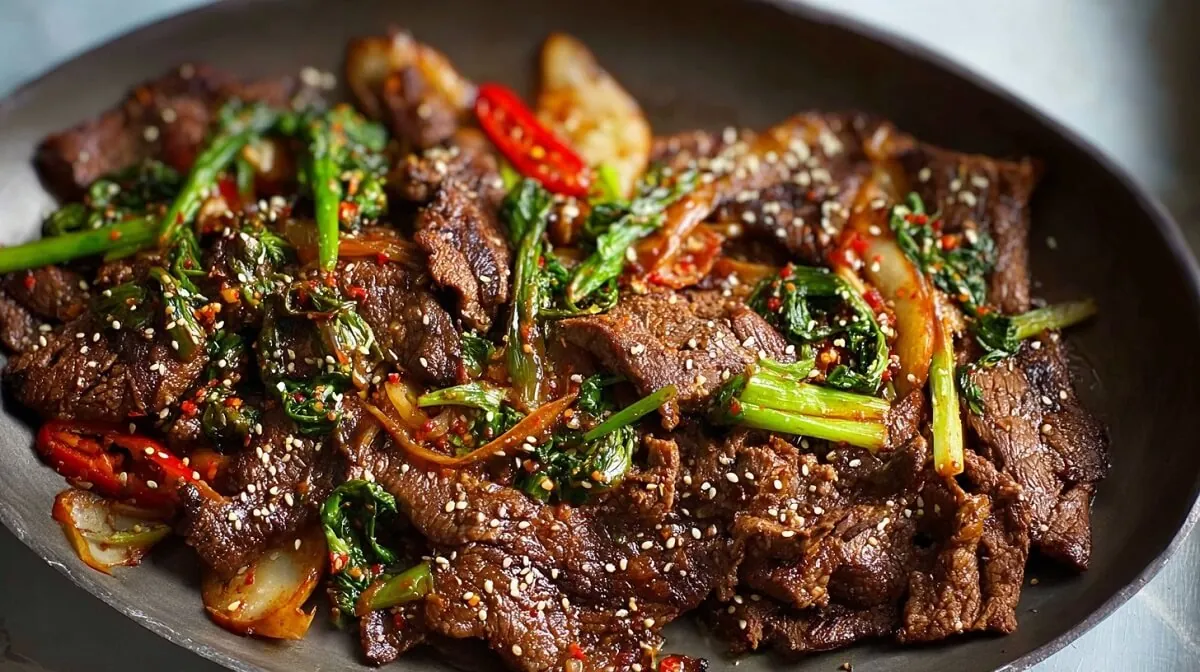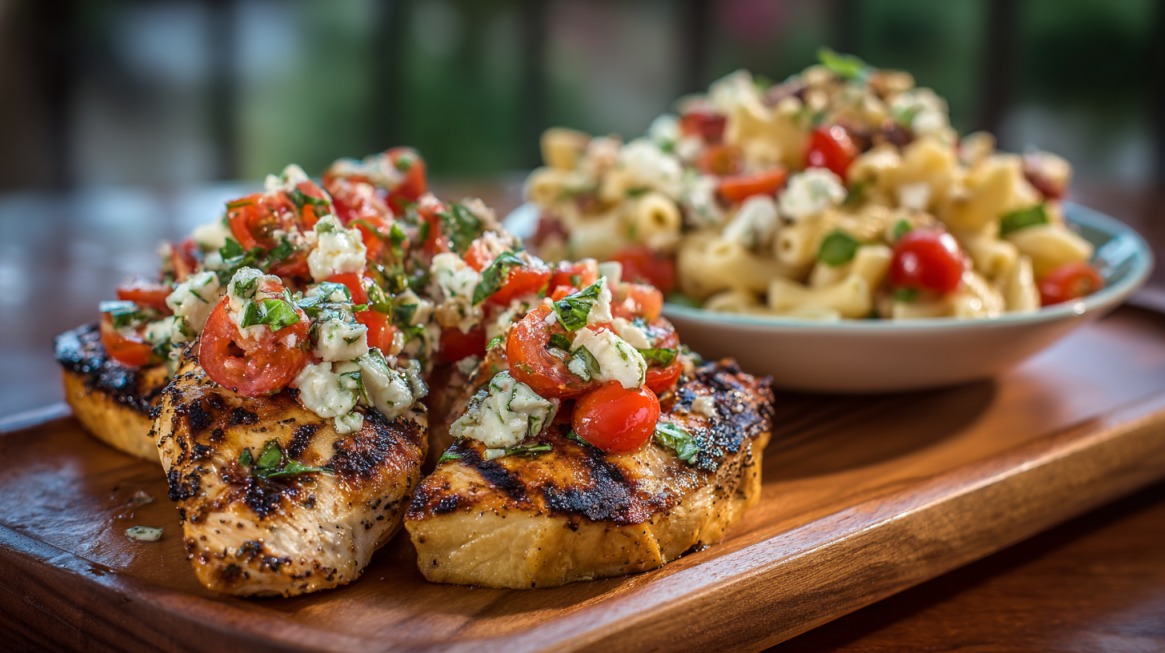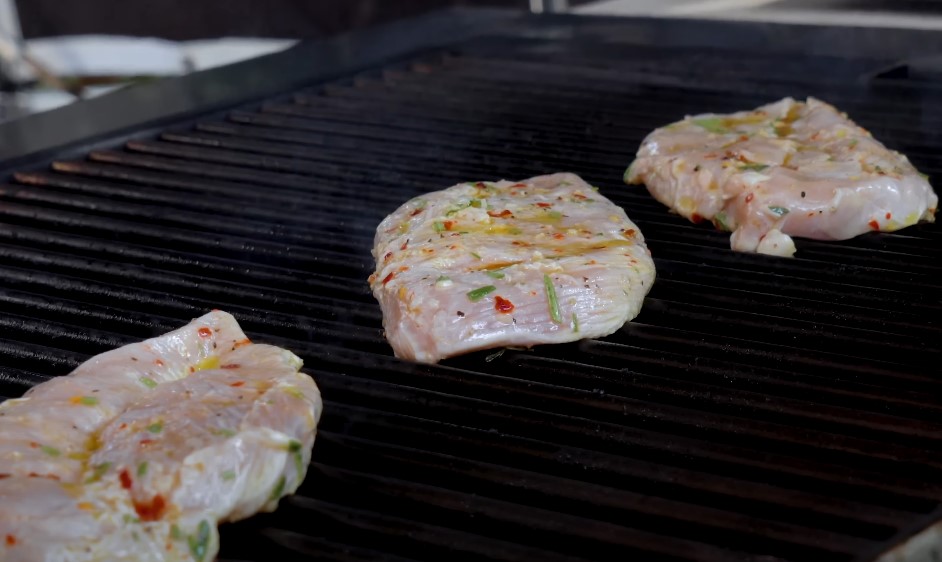If you have ever sat at a table filled with sizzling meat and bowls of sauce, you know the pull of Korean BBQ Beef, often called bulgogi. The smell alone makes you lean closer, waiting for that first bite.
Cooking bulgogi at home feels special because it turns a simple dinner into an event. You slice the beef thin, mix up the marinade, and let the flavors sink in. Once it hits the heat, the meat cooks fast and stays juicy, ready to wrap in lettuce or pile on rice.
Now gather your ingredients and follow along so you can bring the taste of Korean BBQ Beef bulgogi to your own kitchen.
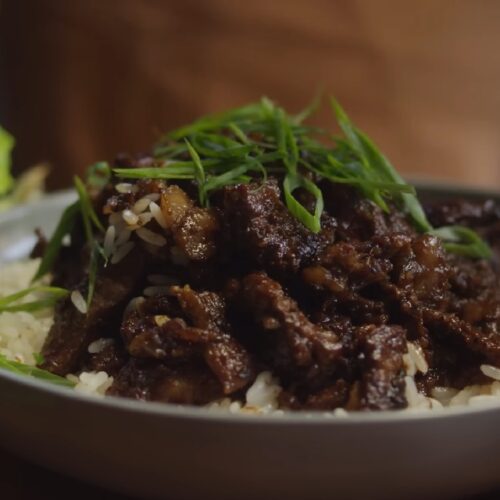
Authentic Korean Bulgogi BBQ Beef
Equipment
- Grill pan or outdoor grill (or substitute with a large skillet or cast iron pan)
- Mixing bowl
- Cutting board and sharp knife
- Tongs
- Measuring cups and spoons
- Plastic wrap or airtight container (for marinating)
Ingredients
- 1.5 lbs 680g ribeye or sirloin beef, thinly sliced against the grain
- 1/2 small Asian pear grated (or substitute with a sweet red apple)
- 1/4 cup soy sauce
- 2 tbsp brown sugar
- 1 tbsp honey
- 1 tbsp sesame oil
- 3 garlic cloves minced
- 1 tsp fresh ginger grated
- 1/4 tsp black pepper
- 2 green onions chopped
- 1 tbsp rice wine mirin – optional, adds depth
- 1 tbsp toasted sesame seeds
- Neutral oil vegetable or canola, for cooking
Instructions
- Prepare the BeefPlace the beef in the freezer for 30 minutes to make slicing easier. Slice thinly against the grain, about 1/8 inch thick.

- Make the MarinadeIn a large mixing bowl, combine grated pear, soy sauce, brown sugar, honey, sesame oil, garlic, ginger, black pepper, green onions, and rice wine (if using). Mix until well blended.

- Marinate the BeefAdd sliced beef to the marinade and massage to coat thoroughly. Cover with plastic wrap or place in an airtight container. Refrigerate for at least 2 hours, preferably overnight for maximum flavor.

- Preheat the Grill or PanHeat a grill pan, cast iron skillet, or outdoor grill over medium-high heat. Lightly oil the surface to prevent sticking.

- Grill the MeatWorking in batches, lay marinated beef in a single layer. Grill each piece for 2–3 minutes per side until browned and caramelized. Don’t overcrowd the pan.

- Garnish and ServeTop with toasted sesame seeds. Serve immediately with steamed rice, lettuce wraps, kimchi, and dipping sauces like ssamjang or gochujang.

Video
Notes
- Meat Choice: Ribeye offers rich marbling and tenderness. Sirloin or brisket are leaner, still flavorful choices.
- Fruit in Marinade: Don’t skip the grated pear or apple - this helps tenderize the beef naturally.
- Don’t Overcrowd: Cook in small batches to achieve proper browning and caramelization.
- Low-Carb Serving Option: Wrap the grilled meat in lettuce leaves with rice and sauce for a lighter option.
- Extra Tenderness: Add a splash of Coke or Sprite to the marinade for a sweet, tender finish - a common Korean home cooking trick.
Best Side Dishes to Pair with Bulgogi
Bulgogi stands out most when paired with traditional banchan. The side dishes bring contrast and balance, turning a simple plate of grilled beef into a full Korean meal. Each one has its own role, cutting through richness, adding freshness, or grounding the flavors.
Classic Side Dishes
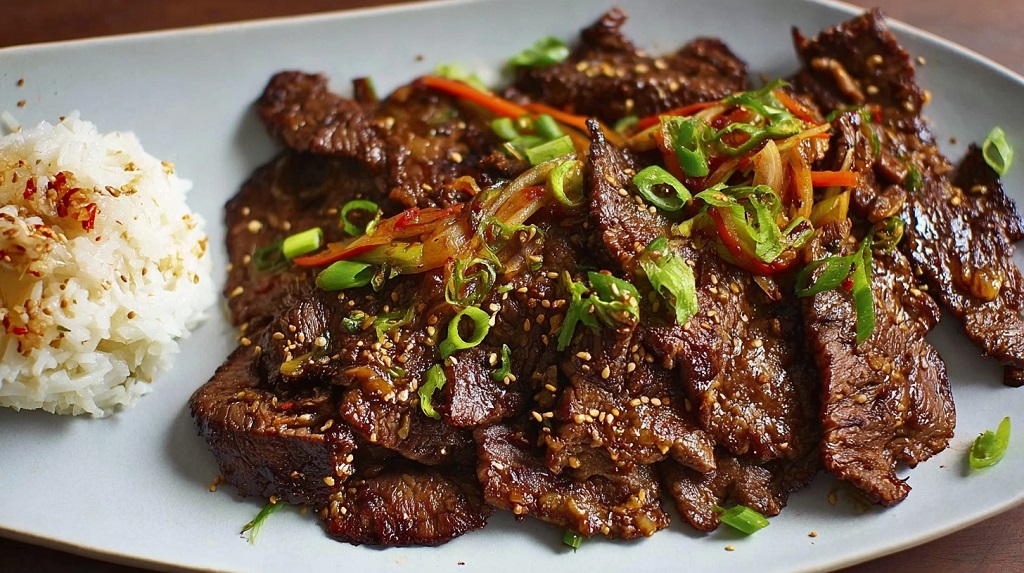
- Kimchi – Fermented cabbage or radish with spice and tang that cuts through the sweet marinade
- Pickled Radish (Danmuji) – Crisp, slightly sweet slices that refresh the palate
- Soybean Sprouts (Kongnamul Muchim) – Lightly seasoned sprouts with a nutty flavor and crunch
- Japchae – Glass noodles stir-fried with vegetables for a soft and savory balance
- Steamed Rice – The base that ties everything together and balances strong flavors
Serving Ideas
Set the table so everyone can build their own bite. Wrap bulgogi in lettuce with rice, add a dab of ssamjang, and layer on kimchi for the perfect combination. A few bowls of seasonal vegetables complete the spread and give the meal the communal feel that defines Korean dining.
How to Store and Reheat Bulgogi Without Losing Flavor
Bulgogi has a way of disappearing fast, but when leftovers remain, you want them to taste just as good the next day. The key is storing it with care and giving it the right kind of heat when you bring it back.
Storage Tips
- Refrigerator – Once the meat cools, slide it into an airtight container and spoon in a little of its juices. That small step keeps the beef moist and full of flavor. Stored this way, it is perfect for up to 3 days.
- Freezer – If you cooked a big batch, divide it into meal-size portions and freeze them. That way, you can pull out only what you need without wasting the rest.
- Flavor Saver – Always add a bit of marinade or sauce before sealing. It locks in the sweetness and spice that make bulgogi shine.
Reheating Methods
- Hot Skillet – Heat a drizzle of oil in a pan and lay the slices down flat. In just a couple of minutes, the edges crisp up again, and the aroma fills the kitchen like it did on day one.
- Grill or Cast Iron – If you want that smoky edge back, fire up the grill or cast iron pan. A quick sear is all it takes to bring the meat back to life.
- Skip the Microwave – It might be fast, but it turns tender beef into rubber. Trust the skillet instead.
Extra Uses for Leftovers
Leftover bulgogi does not have to be a repeat of last night’s dinner. It can be the start of something new:
- Pile it on a hot bowl of rice with a fried egg for an easy comfort meal.
- Wrap it in lettuce with a slice of kimchi for a snack that feels fresh.
- Toss it into stir-fried noodles or fried rice when you want a quick upgrade.
Final Thoughts
Korean BBQ Beef bulgogi stands out because it is simple and powerful at the same time. Thin slices of beef take on a marinade that balances sweet and savory, then cook quickly to keep every bite tender. The smell alone pulls people in, and the taste makes them stay.
It is a dish that works for any table. A bowl of rice, crisp lettuce, and a few sides are all it takes to make the meal feel complete. Once you try bulgogi at home, it becomes clear why it remains one of the most loved parts of Korean cooking.
I’m Leo McIntyre, and my love for cooking was born in my grandmother’s kitchen, where I discovered the magic of traditional Southern recipes. Inspired by her passion and the flavors of my childhood, I started SouthernParm to share these treasured family dishes and keep the rich culinary traditions of the South alive for everyone to enjoy.

